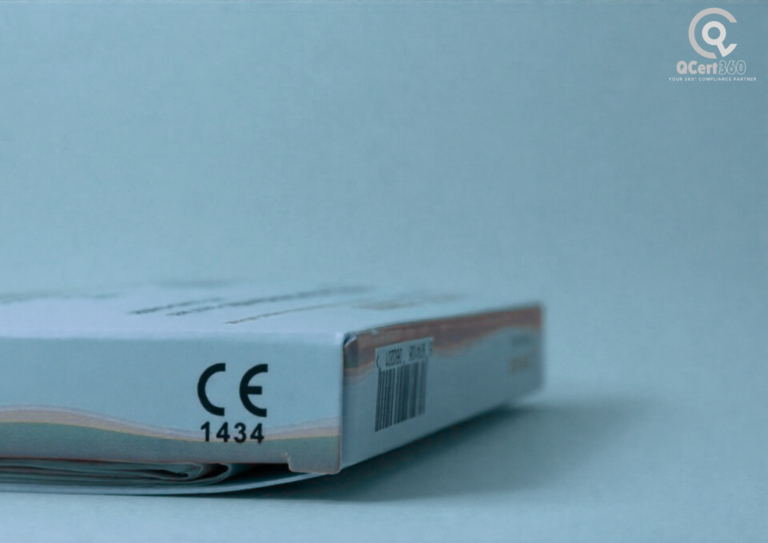
If you’re a manufacturer or exporter looking to sell products in the European market, CE certification is a fundamental requirement you cannot overlook. The CE mark isn’t just a sticker or label—it’s a declaration that your product meets the essential health, safety, and environmental protection standards set by European regulations.
Understanding the CE certification requirements for product market access is crucial to avoid costly delays, legal issues, or product recalls. This article breaks down the CE certification process, explains its benefits, and offers practical advice to help manufacturers and exporters prepare effectively.
What is CE Certification and Why Does It Matter?
CE stands for Conformité Européenne—French for European Conformity. The CE mark indicates that a product complies with the relevant EU directives or regulations, enabling it to be sold freely across all European Economic Area (EEA) countries without additional national approvals.
Whether you produce electronics, machinery, medical devices, or consumer goods, obtaining CE certification is essential for entering and thriving in the EU market. It provides assurance to customers and regulators that your product is safe, reliable, and environmentally compliant.
CE Certification Requirements for Product Market Access
The CE certification requirements for product market access vary depending on the product category. Key directives include:
- The Low Voltage Directive (LVD) for electrical equipment
- The Machinery Directive for industrial machines
- The Medical Devices Regulation (MDR) for medical devices
- The Restriction of Hazardous Substances Directive (RoHS)
Manufacturers must determine which directives apply to their products, understand the essential requirements, and ensure compliance through testing and documentation.
For many products, compliance also means meeting harmonized European standards that detail technical specifications.
How to Get CE Certification for Electronics: A Step-by-Step Overview
Electronics exporters often face strict scrutiny. Here’s a simplified overview of the CE marking process for manufacturers in the electronics sector:
- Identify Applicable Directives and Standards: Research which EU regulations apply to your product. For electronics, this often includes the LVD, EMC Directive, and RoHS.
- Conduct a Product Risk Assessment: Evaluate potential safety and electromagnetic risks.
- Test the Product: Work with accredited labs to conduct necessary tests—covering electrical safety, emissions, and environmental impact.
- Compile Technical Documentation: Prepare detailed records including design drawings, test results, and compliance evidence.
- Prepare the Declaration of Conformity: This legal document states your product’s conformity with all relevant directives.
- Affix the CE Mark: Only after completing all previous steps can you place the CE mark on your product.
Many exporters find this process complex, which is why working with experienced consultants can be invaluable.
CE Compliance Checklist for Exporters: What You Should Have Ready
To ensure a smooth certification journey, here’s a practical CE compliance checklist for exporters:
- Product identification and classification documents
- List of applicable EU directives and standards
- Test reports from accredited laboratories
- Technical files with design and manufacturing details
- Risk assessment and mitigation plans
- Signed Declaration of Conformity
- Evidence of ongoing product monitoring and quality control
Using this checklist helps exporters avoid common pitfalls like missing documentation or insufficient testing.
Benefits of CE Certification for Exporters
Beyond legal compliance, there are strong business reasons to pursue CE certification:
- Market Access: The CE mark opens doors to all EEA countries, simplifying cross-border sales.
- Customer Confidence: The mark signals product safety and quality, building trust with buyers and end-users.
- Reduced Liability: Meeting EU standards reduces risks of product recalls or lawsuits.
- Competitive Advantage: Certified products often have a market edge over non-compliant competitors.
These advantages make CE certification benefits for exporters clear—it’s both a legal necessity and a business enabler.
CE Mark Testing and Documentation Process
Testing is a critical part of CE compliance. Accredited laboratories conduct rigorous assessments tailored to the product category. Testing covers:
- Safety parameters (e.g., electrical insulation, temperature resistance)
- Electromagnetic compatibility (EMC)
- Chemical content (e.g., RoHS compliance)
- Performance and durability
All results feed into the technical documentation required for the CE certification process. Maintaining accurate records is vital for audits and regulatory inspections.
CE Certification for Medical Devices: Special Considerations
The CE certification for medical devices involves adherence to the stringent Medical Devices Regulation (MDR). Manufacturers must demonstrate safety, performance, and clinical evaluation.
The process often requires involvement from notified bodies for conformity assessment and includes post-market surveillance obligations. Exporters in this sector should engage experts early to navigate complex regulatory demands.
How to Prepare for a CE Certification Audit
A key step is how to prepare for CE certification audit—which may be conducted by notified bodies or internal auditors.
Preparation tips include:
- Ensuring all technical documentation is complete and up to date
- Training staff on product compliance and safety protocols
- Implementing quality management systems aligned with ISO 9001 or relevant standards
- Conducting internal audits to identify and fix issues before external review
Thorough preparation increases the likelihood of a successful certification outcome.
Working with CE Certification Consultants: Why It Matters
Many manufacturers, especially SMEs, benefit from engaging a CE certification consultant for small manufacturers. Consultants bring:
- Expertise in regulatory requirements and harmonized standards
- Support with technical documentation and testing coordination
- Guidance on managing compliance risks and audit readiness
A skilled consultant can save time and reduce costly errors.
CE Compliance Standards for Machinery and Consumer Goods
Machinery and consumer products also fall under specific CE directives requiring tailored compliance strategies.
For example, CE compliance standards for machinery demand strict safety features and risk assessments to protect operators. Consumer goods, meanwhile, must meet product safety and chemical restrictions.
Manufacturers should review applicable directives carefully and adapt their compliance approach accordingly.
Legal Requirements for Exporters: What the Law Says
The CE mark legal requirements for exporters mandate that manufacturers must:
- Conduct conformity assessments
- Keep technical documentation for at least 10 years
- Report serious incidents to authorities
- Cooperate with market surveillance bodies
Non-compliance can lead to penalties, product recalls, or bans, emphasizing the importance of thorough CE certification.
Case Study: How Qcert360 Helped an Electronics Manufacturer Achieve CE Certification
A mid-sized electronics manufacturer struggled to access EU markets due to incomplete technical documentation and unclear compliance with RoHS and EMC directives. Their products were held back by regulatory uncertainties, limiting export growth.
Qcert360 stepped in with a full-scale consulting engagement. First, they conducted a detailed gap analysis covering the CE certification requirements for product market access. Then they guided the manufacturer through the CE marking process for manufacturers, including arranging product testing at accredited labs and compiling the technical documentation.
Qcert360’s team also trained staff on how to prepare for CE certification audit, ensuring internal readiness before the external notified body visit. Within four months, the company successfully affixed the CE mark to its product line, unlocking new EU contracts and boosting revenues by 25%.
This case underscores the value of expert guidance in navigating complex certification processes.
Why Choose Qcert360 for CE Certification?
Qcert360 offers comprehensive services for manufacturers and exporters pursuing CE certification. Their strengths include:
- Deep Regulatory Expertise: In-depth knowledge of EU directives and harmonized standards across multiple product categories.
- End-to-End Support: From initial gap analysis, product testing coordination, document preparation, to audit readiness.
- Tailored Solutions: Customized consulting focused on your product’s unique compliance needs and market goals.
- Experienced Team: Professionals who understand the practical challenges faced by manufacturers, especially SMEs.
- Commitment to Client Success: Proven track record of helping clients meet CE mark legal requirements for exporters and successfully enter EU markets.
Partnering with Qcert360 ensures your CE certification journey is efficient, transparent, and effective.
Conclusion
Navigating CE certification can be daunting but is essential for successful product market access in Europe. Knowing the CE certification requirements for product market access, following a structured CE marking process for manufacturers, and engaging expert consultants like Qcert360 make all the difference.
With proper preparation, documentation, and guidance, your product can carry the CE mark confidently, opening doors to one of the world’s largest markets.
FAQs
- What products require CE certification?
Many products sold in the EEA, including electronics, machinery, medical devices, and toys, require CE marking. - How long does the CE certification process take?
Depending on product complexity, it can range from a few weeks to several months. - Can I self-certify my product?
For many products, yes. However, some require third-party notified body assessment. - What happens if I sell products without CE marking?
You risk fines, product seizures, and bans from the EU market. - Do I need to retest products after certification?
Ongoing quality controls and periodic reviews are recommended. - Is CE marking a quality mark?
It indicates compliance with EU safety and environmental requirements, not necessarily quality. - How often do I need to renew CE certification?
There’s no expiry, but products must continuously comply with relevant standards. - What is the role of a notified body?
They conduct conformity assessments for higher-risk products. - Can CE marking be used outside Europe?
It’s primarily for the EEA but can boost credibility elsewhere. - How can a consultant help with CE certification?
They provide regulatory expertise, manage documentation, and prepare you for audits.


